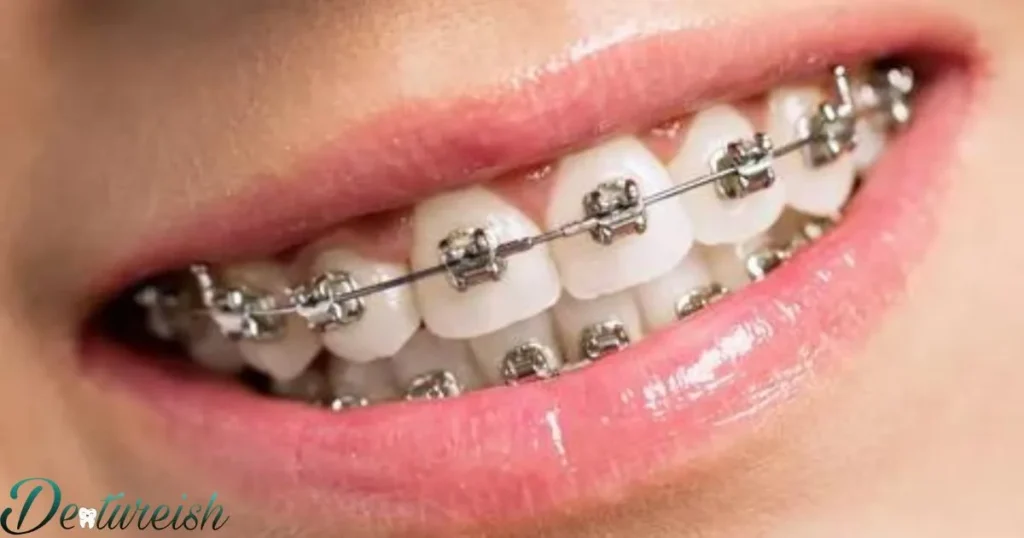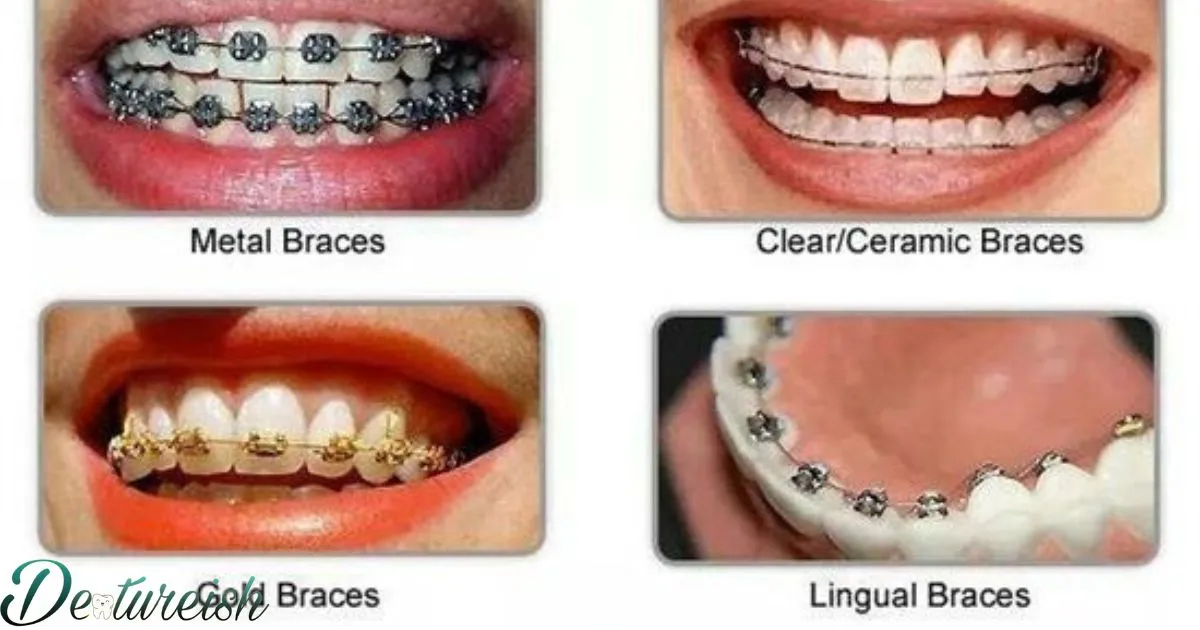Braces are orthodontic devices that are used to align teeth and jaws. They come in various types to treat different dental issues. The main kinds of braces are metal braces, ceramic braces, lingual braces and clear aligners.
“What Are The Different Kinds Of Braces?” This is an important question for those considering orthodontic treatment. Knowing your options can help you choose the type of braces best suited to your individual dental needs and lifestyle.
The most common type are traditional metal braces, which use brackets and wires to gradually shift teeth into their proper positions. Ceramic or clear braces are less noticeable alternatives to metal. Lingual braces are fitted to the back of teeth for discreteness. Invisible aligners are removable appliances that straighten teeth without wires or brackets being visible.
Metal Braces
Metal braces are the most common type of orthodontic braces. They are made of stainless steel and are fitted to the front of teeth. Metal braces use wires and brackets to apply pressure and gradually shift teeth into proper alignment.
Brackets are bonded to the front of each tooth, and an archwire is slipped into place within the brackets. Ligatures like elastic rings or tiny slides are used to tighten the wire against the brackets and increase the pressure over time.
What Do Metal Braces Look Like?
Metal braces are readily identifiable by the sleek, silver brackets and wires attached prominently to the front of the teeth. Each tooth has its own bracket, holding the archwire in place. Colored rubber bands or ties are sometimes added behind the teeth.
The metal braces look very structured and orderly as they work together to exert corrective forces on the teeth. Braces may feel strange at first but patients quickly get used to their new smile. Regular adjustments help the teeth slowly shift into place.
How Do Metal Braces Work?
Metal braces work through the application of gentle, sustained pressure on the teeth over time. The brackets bond directly to the enamel surface, with the archwire slipped into place.
As the wire is tightened during monthly visits, it presses against the brackets and slight bends are added to guide tooth movement. Ligatures hold the wire tight so pressure rules the alignment process.
Are Metal Braces Painful?
Most patients report only mild discomfort from metal braces, usually limited to the first few days after an adjustment. Over-the-counter pain relievers can help if needed. While chewing and biting may feel awkward at first, this sensation dissipates quickly.
Some sharp spots or edges on the wires can cause irritation as the teeth are shifting but irregularities are smoothed out during routine cleaning and examination. Soreness is usually temporary and generally not severe. Staying on top of hygiene helps prevent lasting pain or tenderness.
How Long Do You Typically Wear Metal Braces?
The average treatment time with metal braces is one to two years but it ultimately depends on the complexities of the initial dental alignment. Minor tooth shifting may clear up in 12-18 months while more extensive work could take closer to two full years.
Patients must also be careful of relapse once braces come off, often addressed through retainers. Factors like age, Different Kinds Of Dental Braces jaw growth remaining, and individual tooth anatomy impact timelines. Most orthodontists map out clear goals and timetables tailored per patient’s needs.
Ceramic Braces
Ceramic braces are a discreet alternative to traditional steel braces. The brackets and wires are constructed of translucent ceramic to blend in more naturally with tooth enamel.
What Makes Ceramic Braces Different From Metal Braces?
Ceramic braces are similar to traditional metal braces in how they function to align teeth, but they differ in their appearance and materials. The main differences between ceramic and metal braces can be seen below:
| Ceramic Braces | Metal Braces |
| Brackets and wires are made of translucent ceramic or sapphire to blend in with teeth. | Brackets and wires are constructed of shiny stainless steel that contrasts with teeth. |
| Ceramic is tooth-colored for a less noticeable look, especially from a distance. | Metal is silver and stands out visually when smiling or talking. |
| More expensive than metal braces due to using advanced materials. | Less costly due to basic stainless steel construction. |
Do Ceramic Braces Work As Well As Metal Braces?

Yes – clinical studies show ceramic braces employ the identical tooth movement techniques as metal and can achieve similarly excellent results. The biomechanics of aligners pressing strategically on teeth remains unchanged between materials. Some orthodontists even prefer ceramics for adult patients.
Are Ceramic Braces More Expensive Than Metal Braces?
Generally, yes – ceramic braces carry a small price premium over basic metal due to utilizing more advanced materials in fabrication. Costs vary between providers but patients can expect to pay 10-20% more than standard metallic orthodontics. The increased aesthetic appeal makes it worthwhile for many.
How Do Ceramic Braces Feel Compared To Metal Braces?
Discomfort levels are about the same – both metal and ceramic apply controlled forces on teeth through archwires contacting brackets. The sensation of pressure and mild achiness during early phases and after adjustments feels indistinguishable. Ceramic brackets simply blend in optically unlike shiny metals.
Lingual Braces
Lingual braces are an option that places the brackets and wires on the back of the teeth rather than the front. This results in a treatment method that is nearly invisible.
What Exactly Are Lingual Braces?
Lingual braces function similarly to traditional braces, but all the components are attached to the lingual, or backside, of the teeth. Small metal brackets are bonded onto each tooth where they are unable to be seen by others. Wires are then connected between the brackets to enact pressure.
Why Choose Lingual Braces Over Other Types Of Braces?
Some patients pick lingual braces because they value having orthodontics that cannot be noticed when talking or smiling. Those in public facing jobs may prefer how lingual braces stay concealed. Adults also frequently choose them since appearance-focused concerns tend to be higher.
How Are Lingual Braces Installed?
The process for installing lingual braces is a bit more complex than front braces. Impressions must first be taken of both jaws to generate very precise customized brackets and wires for the small lingual surfaces. During placement, brackets are then secured one by one to the rear of each individual tooth.
What Are The Disadvantages Of Lingual Braces?
As lingual braces are situated behind the teeth, they can be more difficult for the orthodontist to access and adjust. This often means a longer overall treatment time. Brushing and flossing the hidden brackets also requires dexterity. Speech may be impacted for a short adjustment period as well.
Clear Aligners
Clear aligners refer to a system of nearly invisible plastic trays that gradually shift teeth over multiple two-week sets. Invisalign is the leading manufacturer and brand.
What Are Clear Aligners And How Do They Work?
Clear aligners are removable plastic shells that encompass both arches of teeth. Successive sets are programmed to apply slight tooth movements per tray. Wearing each set for 22 hours daily, the jawbone and gums assist precise tooth repositioning in 1-2 weeks.
Kinds Of Issues Can Clear Aligners Treat
5 kinds of issues clear aligners can treat in short simple sentences
- Crowding – Clear aligners can address mild to moderate crowding of the teeth.
- Gaps – Small spaces between teeth may be closed with clear aligners.
- Overbites – These can be corrected by pushing back upper teeth or bringing forward lowers.
- Underbites – Clear aligners can work to align the bite by shifting teeth to reduce or fix underbites.
- Minor rotations – If teeth are slightly rotated out of place, clear aligners may rotate them into the proper position.
How Effective Are Clear Aligners Compared To Traditional Braces?
Various clinical studies show clear aligners perform comparably well to wires and brackets for many cases. With compliance in consistently wearing aligners as directed, close to identical orthodontic results can usually be achieved. Individual teeth may shift slightly faster with traditional metal braces.
What Is The Process For Clear Aligner Treatment?
An orthodontist first examines dental impressions and bite records to design a customized clear aligner plan. Regular check-ups occur to ensure proper tracking. Periodic aligner changes then push teeth into alignment over 5-14 monthly sets. Retainers usually follow to stabilize results long-term.
Deciding On The Right Braces For You
Deciding on the right braces for you is an important choice. There are several factors to consider such as your lifestyle, aesthetic preferences, and overall dental health and needs. Speaking with an orthodontist can help you better understand your options so you can select the type of braces best suited to your individual case.
What Factors Should You Consider When Choosing Braces?
Patients consider their aesthetic priorities, oral health, treatment complexity, pain tolerance, lifestyle and budget when selecting braces. An orthodontist exam helps align preference with realistic options.
When Should You Get Braces – As A Child Or As An Adult?
Early orthodontics allow guiding jawbone growth but adult treatments effectively move teeth too. Either approach works – consider how long you need results for important life stages ahead.
How Much Do Different Types Of Braces Typically Cost?
Basic metal braces average $5,000–$8,000 while lingual or ceramic cost 10–20% more. Invisalign runs $3,500–$8,000, depending on case complexity and provider. Insurance coverage varies so inquire about options.
Orthodontist About Braces Options
Discuss treatment length and retention needs upfront. Inquire about cost breakdowns including retainers. Find out provider experience levels too for level of certainty in getting your desired results from whichever treatment method you select.
Frequently Asked Question
Metal Or Ceramic Braces?
Either material can straighten teeth though ceramic is less noticeable.
Invisalign Or Traditional Braces?
Clear aligners are removable while braces require more adjustments and are fixed.
Do Braces Hurt?
Some discomfort occurs but over-the-counter pain relievers help and soreness does not last long.
How Long Will I Have Braces?
Treatment time varies depending on the complexity of the case but usually takes 12-24 months.
What Is The Cost Of Braces?
Expenses range from $3,500 to $8,000 depending on the provider, type of braces, and your dental insurance coverage.
Conclusion
There are several good options when it comes to different kinds of braces. Metal braces are a reliable standard but ceramic and clear aligners offer less conspicuous alternatives. The best type depends on factors like treatment needs, cost, and individual priorities.
Speaking with an orthodontist can help assess your specific case and dental issues so they can recommend the brace system most likely to achieve your desired results. While all brace kinds function through applying gentle pressure over time, choosing the right one tailored to your discretion, pain tolerance, and lifestyle will help ensure you stick with treatment to attain the healthy, confident smile you want.

